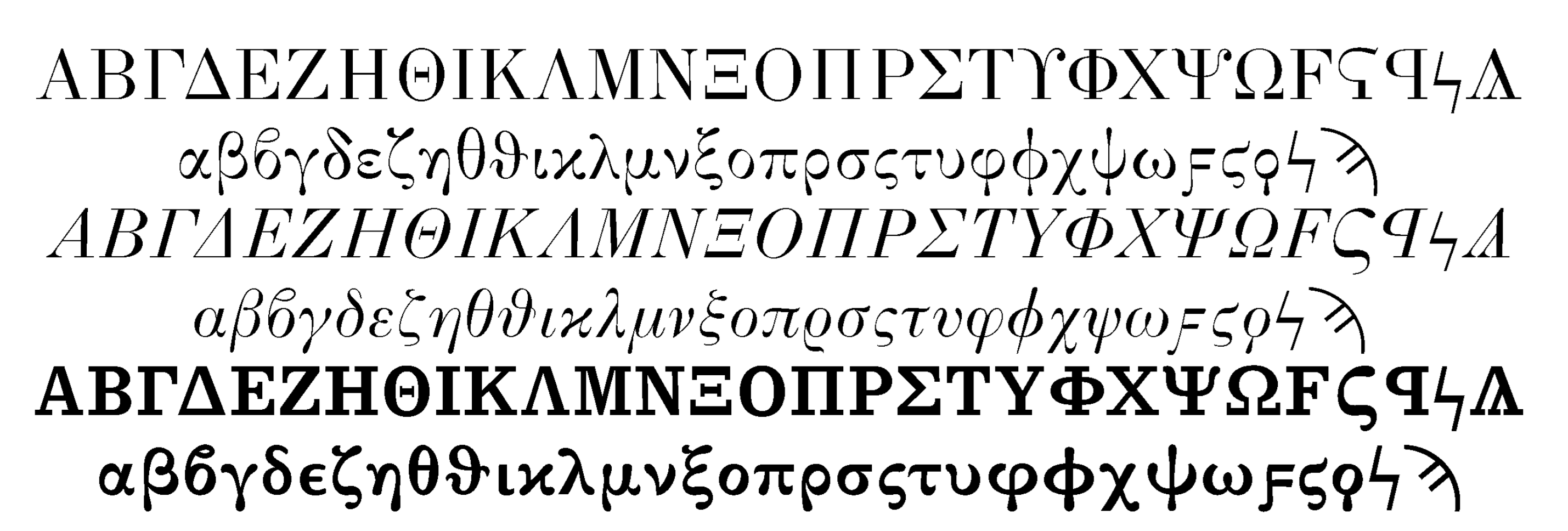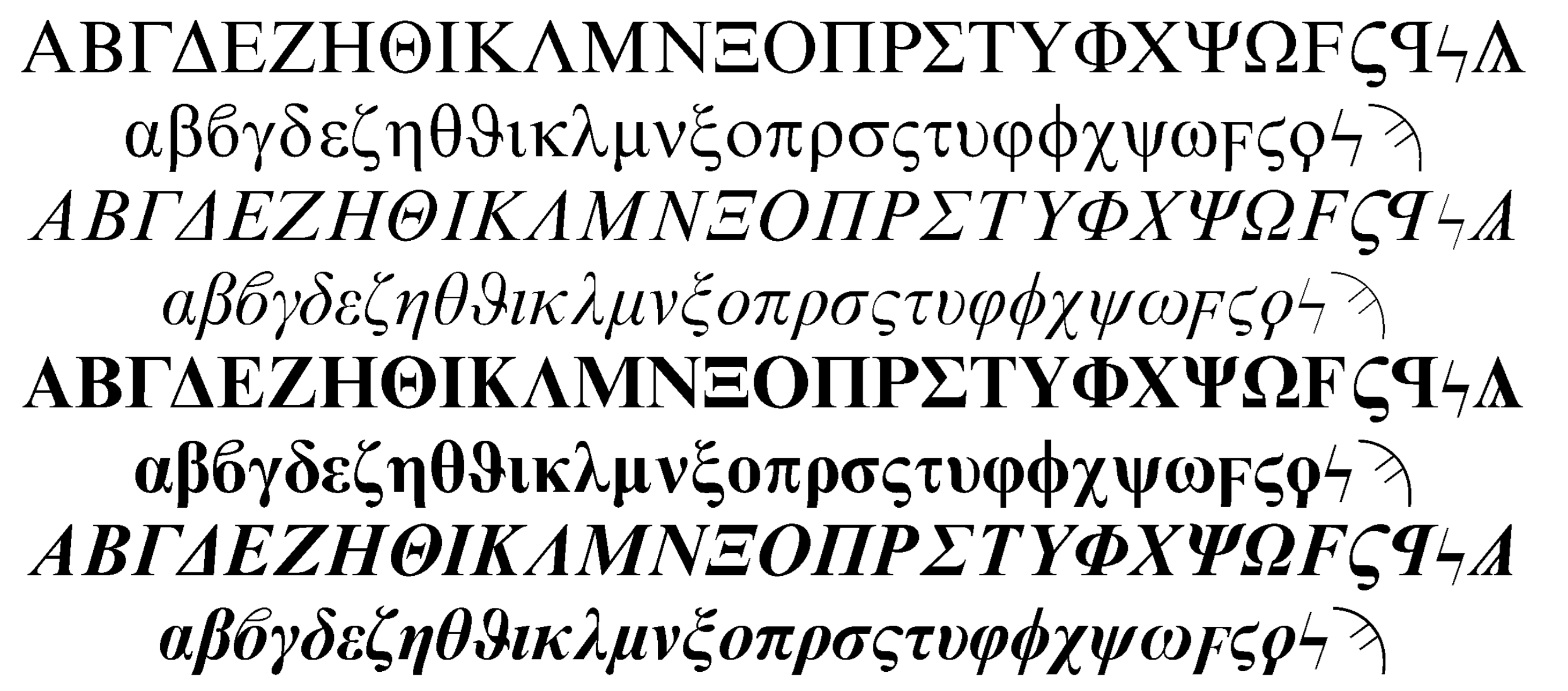TYPE DESIGN INFORMATION PAGE last updated on Sat Jun 22 22:34:57 EDT 2024
FONT RECOGNITION VIA FONT MOOSE
|
|
|
|
Monotype Greek 90
Monotype Greek Series 90 was the best seller of all Monotype Greeks. According to J.F. Coakley, the 11-point size sold 950 sets of matrices. That figure testifies to its popularity in Greece; but in academic use in England it is rarely seen in comparison to series 106 Porson and series 192 New Hellenic. Neither Cambridge University Press nor Oxford showed it in their specimens, although Cambridge substituted the upright caps of this series for the inclined ones of Porson. Some further details about Monotype Greeks, especially New Hellenic, and a specimen of some other Greek types not often seen, may be found in my book The Greek types of the Jericho Press (2014). The font is in all likelihood based on a 1805 design by Firmin Didot. Michal Boyer explains: That design was revived in 2006 by George D. Matthiopoulos for a project of the Department of Literature in the School of Philosophy at the University of Thessaloniki and is available as GFS Didot Classic. The Greek Font Society also distributes a more modern design by Takis Katsoulidis, digitired by George Matthiopoulos, GFS Didot (that comes with TeX Live and MacTeX). There are also Monotype Greek 91 and 92 series. Other Monotype Greek series include Monotype Greek Times (also called Elsevier), Monotype Porson, Monotype New Hellenic and Monotype Greek Sans 486. Yannis Haralambous, in From Unicode to Typography, a Case Study the Greek Script writes: Until the arrival of computer DTP, most printed books were typeset in one, or more, of the following typefaces: Apla (which Monotype calls Greek 90, 91, 92), Times, Porson, New Hellenic, Greek Sans 486. [These are all by Monotype.] When the phototypesetting machines were replaced by computers, the situation changed rapidly: the Times fonts were taken over by the computer, bad quality imitations of the original Monotype Greek 90 were used for the Apla style, new fonts were designed and used: Linotype released Greek Baskerville and New Century Schoolbook, Greek companies (like Magenta) have adapted many of the Latin typefaces to the Greek script. He classifies Greek text typefaces into five categories
|
EXTERNAL LINKS |
| | |

file name: Monotype Greek90 91 92

file name: Monotype Greek90 Sample

file name: Monotype Greek Sans486

file name: Monotype Greek Times Elsevier

file name: Takis Katsoulidis Apollonia

file name: Greek Font Society G F S Bodoni 2018

file name: Monotype New Hellenic

file name: Monotype Porson
| | |
|
Luc Devroye ⦿ School of Computer Science ⦿ McGill University Montreal, Canada H3A 2K6 ⦿ lucdevroye@gmail.com ⦿ http://luc.devroye.org ⦿ http://luc.devroye.org/fonts.html |

